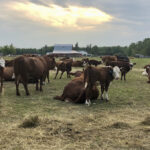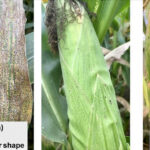News — page 312

Simplifying conservation programs
Researcher sees unnecessary overlap of funding options in southern Ontario
Editorial: The need for more efficient nitrogen
Harvesting nitrogen a sustainable option, says Corteva
Biological product works with plants to draw nitrogen from the atmosphere

African swine fever puts pork producers on high alert
Deadly virus found in the Dominican Republic

Ontario 2021 wheat yields the highest in years
Ideal rainfall led to high wheat yields but it also compromised quality

Funds support drought-stricken Ontario farmers
Payments will help but the ‘one-size-fits-all’ approach doesn’t work long-term, says industry

Northwestern Ontario farmers wait for hay
A Beef Farmers of Ontario project has already started moving hay to the area

Update on tar spot in corn
OMAFRA Field Crop Report for August 18

Looming spring wheat protein shortage bodes well for Canadian sales demand
Protein levels in this year’s U.S. hard red winter wheat are expected to be well below average by the time farmers harvest the entire crop


